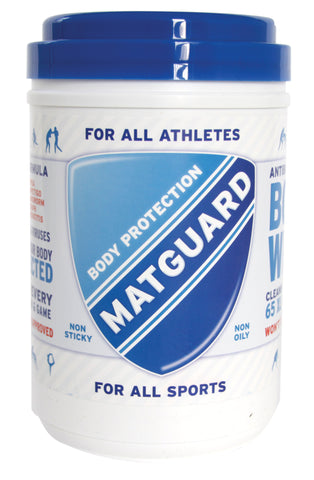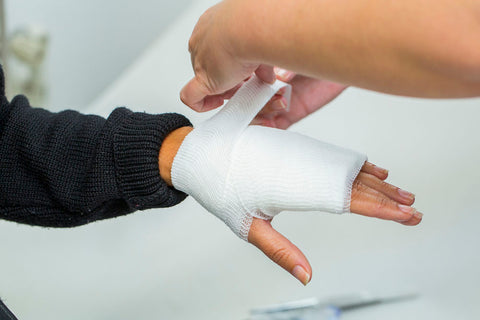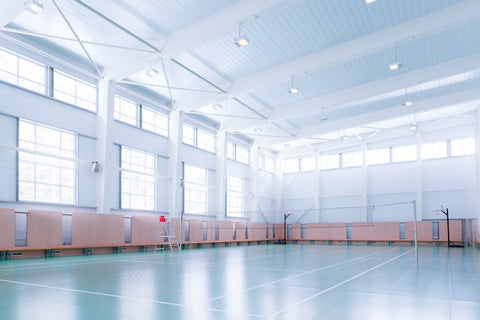
MRSA Prevention: Your MRSA Prevention Guide
Brief Overview of MRSA (Methicillin-resistant Staphylococcus aureus) and Its Relevance to Athletes
Methicillin-resistant Staphylococcus aureus, commonly known as MRSA, is a type of bacteria that has become resistant to several antibiotics. This resistance makes MRSA infections more difficult to treat than infections caused by non-resistant bacteria. Athletes are particularly vulnerable to MRSA infections due to frequent skin-to-skin contact and shared use of facilities and equipment. Understanding and implementing effective MRSA prevention strategies is crucial in these environments to safeguard the health and well-being of all participants.
Highlighting the Importance of Prevention Due to Close Contact and Shared Facilities in Sports
In the world of sports, close physical contact and the communal use of locker rooms, showers, and equipment are the norm. These conditions create ideal environments for the spread of MRSA. Effective MRSA prevention in these settings is not just a matter of personal hygiene but a collective responsibility. Preventing MRSA infections requires a coordinated effort involving athletes, coaching staff, and facility managers to minimize the risk of transmission and ensure a safe sporting environment.
Purpose of the Guide
This guide aims to equip athletes, coaches, and sports facility managers with actionable strategies for MRSA prevention. By understanding MRSA, recognizing how it spreads, and implementing robust prevention measures, we can significantly reduce the risk of MRSA infections among athletes. This guide provides comprehensive insights into maintaining a healthy sporting environment through effective infection control practices.
Understanding MRSA

Definition and Characteristics of MRSA
MRSA is a bacterium that causes infections in different parts of the body. It's tougher to treat than most strains of staphylococcus aureus because it's resistant to some commonly used antibiotics. The characteristics of MRSA include its ability to survive on surfaces and skin for extended periods, making it a persistent threat in communal environments like sports facilities.
How MRSA is Different from Regular Staph Infections
Unlike regular staph infections, MRSA infections are resistant to methicillin and other antibiotics, making them more challenging to treat. This resistance means that infections can escalate quickly if not addressed promptly, leading to more severe health issues. MRSA prevention is critical because it helps avoid the complications associated with these hard-to-treat infections.
Why Athletes are at Higher Risk of Contracting MRSA
Athletes are at an increased risk for MRSA infections due to several factors unique to their environment. The combination of cuts or abrasions, close contact during sports activities, and the sharing of equipment and facilities can create opportunities for MRSA to spread. Sweat and minor injuries can also serve as entry points for the bacteria, further elevating the risk among athletes.
Recent Statistics on MRSA Infections Among Athletes
Recent statistics have highlighted a concerning trend of MRSA infections within athletic communities. Studies show that athletes, particularly those involved in contact sports, are at a significantly higher risk of MRSA infections compared to the general population. These statistics underscore the importance of MRSA prevention measures in sports settings to protect athletes from infection.
By focusing on MRSA prevention, this guide aims to address the critical need for awareness, education, and action among the athletic community. Through a collective effort, we can significantly reduce the risk of MRSA infections and ensure a safer and healthier environment for all athletes.
Transmission of MRSA in Sports
Common Ways MRSA Spreads in Athletic Environments
MRSA prevention in sports settings is crucial due to the bacteria's ability to spread through both direct contact with an infected wound and indirect contact with contaminated objects and surfaces. In athletic environments, MRSA transmission can occur during physical contact sports, where athletes are likely to have skin-to-skin contact. Additionally, sharing personal items like towels, sports gear, and equipment that may have come into contact with MRSA contributes to its spread among athletes.
Role of Shared Equipment and Facilities in MRSA Transmission
The shared use of equipment and facilities such as weight rooms, locker rooms, and showers plays a significant role in the transmission of MRSA among athletes. Surfaces in these areas can become contaminated with MRSA, allowing the bacteria to transfer to an athlete's skin or personal items. Regular cleaning and disinfection of these shared spaces are pivotal in MRSA prevention strategies to minimize the risk of MRSA transmission.
Signs and Symptoms of MRSA
Early Signs of MRSA Infection That Athletes Should Not Ignore
Early detection of MRSA infections is key to effective treatment and prevention of further spread. Athletes should be vigilant for signs such as red, swollen, painful bumps on the skin, often mistaken for spider bites or bumps that become filled with pus or other drainage. These can be early indicators of MRSA and should not be ignored, as early intervention is crucial for MRSA prevention and containment.
When to Seek Medical Attention
Athletes should seek medical attention at the first sign of what could be a MRSA infection, especially if the area around a wound or sore becomes increasingly painful, red, or swollen. Fever or other signs of infection should also prompt immediate medical evaluation. Prompt diagnosis and treatment are essential components of MRSA prevention, helping to prevent the spread of the infection to teammates and others.
The Potential Complications of Untreated MRSA Infections
Untreated MRSA infections can lead to serious health complications, including abscesses that require surgical draining, bloodstream infections, pneumonia, and infections in bones and joints. In severe cases, these complications can become life-threatening. The potential for these serious health issues highlights the critical nature of MRSA prevention and the importance of early intervention and treatment for those infected.
Preventive Strategies for Athletes
Personal Hygiene Practices to Reduce MRSA Risk
Effective MRSA prevention starts with rigorous personal hygiene practices. Athletes should make regular hand washing with soap and water a habit, especially before and after practice, games, and using shared equipment. Showering immediately after practice or games is crucial to remove bacteria that may have been acquired on the field or in the gym. These simple yet effective habits can significantly reduce the risk of MRSA transmission among athletes.
Using MatGuards Antibacterial Body Wipes Before and After Any Game or Practice

Incorporating the use of MatGuards antibacterial body wipes into the routine of athletes provides an additional layer of protection against MRSA. These wipes are designed for use before and after games or practice sessions, offering a convenient and effective way to eliminate bacteria on the skin, especially when immediate access to showers is not possible. Regular use of antibacterial body wipes is a proactive approach to MRSA prevention.
Guidelines for Proper Wound Care and Covering Cuts or Abrasions

Proper wound care is a critical component of MRSA prevention. Athletes should clean all cuts and abrasions immediately with soap and water, apply an antibiotic ointment, and cover them with a clean, dry bandage until they are healed fully. This not only aids in preventing MRSA from entering the wound but also reduces the chance of spreading bacteria to others.
The Importance of Not Sharing Personal Items
One of the simplest, yet most effective MRSA prevention strategies is to avoid sharing personal items such as towels, uniforms, and sports equipment. Bacteria, including MRSA, can easily transfer between individuals through these items. Athletes should be encouraged to use their personal gear and properly clean and disinfect them after each use.
Preventive Measures for Sports Facilities

Cleaning and Disinfecting Protocols for Equipment and Facilities
Sports facilities must implement strict cleaning and disinfecting protocols as part of their MRSA prevention efforts. This includes regular cleaning of all surfaces that come into contact with athletes, including gym equipment, mats, and locker rooms. Use of EPA-registered disinfectants is essential for effectively eliminating MRSA from surfaces.
Using MatGuards Disinfectant Products for Prevention
To enhance MRSA prevention, sports facilities should consider using MatGuards disinfectant spray and disinfectant wipes for cleaning equipment. These products are specifically designed to kill bacteria, including MRSA, on various surfaces. Spraying equipment before and after use with the disinfectant spray and wiping down with disinfectant wipes can significantly reduce the risk of MRSA transmission.
Guidelines for Laundry and Handling of Athletic Wear and Gear
Proper laundering of athletic wear and gear is vital in MRSA prevention. All athletic clothing should be washed in hot water with detergent and dried on a high heat setting to kill any bacteria present. Facilities should provide guidelines for athletes on how to handle and launder their gear, emphasizing the importance of not sharing personal items.
Recommendations for Regular Facility Assessments to Identify and Mitigate Infection Risks
Regular assessments of sports facilities are essential to identify potential MRSA infection risks and implement necessary prevention measures. These assessments should focus on evaluating the effectiveness of current cleaning protocols, the condition of equipment and facilities, and the overall hygiene practices of athletes and staff. Implementing changes based on these assessments can significantly contribute to the overall MRSA prevention strategy.
Role of Coaches and Sports Organizations
Developing and Enforcing Health and Safety Policies
For effective MRSA prevention, coaches and sports organizations must take the lead in developing and strictly enforcing health and safety policies. These policies should include guidelines on personal hygiene, wound care, facility cleanliness, and the proper use of personal and shared equipment. Enforcing these policies ensures that all athletes and staff members understand their roles in preventing MRSA transmission and are held accountable for adhering to these practices.
Education and Training for Athletes and Staff on MRSA Prevention
Education is a cornerstone of MRSA prevention. Coaches and sports organizations should provide regular training sessions for athletes and staff, focusing on the importance of MRSA prevention, recognizing the signs and symptoms of MRSA infections, and the correct procedures for cleaning and disinfecting personal and shared spaces. This ongoing education helps create a culture of awareness and proactive prevention within the organization.
Responding to MRSA Infections and Outbreak Management Strategies
In the event of a MRSA infection or outbreak, having a clear and effective response strategy is crucial. This includes isolating the infected individual(s), providing immediate medical care, and thoroughly cleaning and disinfecting any potentially contaminated areas. Coaches and sports organizations must also communicate effectively with all members about the situation while maintaining the privacy of those affected, to prevent panic and further spread of the infection.
MRSA Screening and Medical Interventions
The Role of Screening and Early Detection in Preventing Outbreaks
Screening and early detection play critical roles in MRSA prevention. Particularly in identifying carriers or infected individuals before an outbreak occurs. Routine screenings, especially in high-contact sports, can help identify asymptomatic carriers. Further allowing for early intervention and reducing the risk of widespread transmission. Implementing regular screening procedures as part of the health and safety protocols can significantly contribute to preventing MRSA outbreaks.
Treatment Options for MRSA Infections
Once a MRSA infection is identified, prompt and appropriate treatment is essential. Treatment options may vary depending on the severity of the infection but often include the use of specific antibiotics effective against MRSA, drainage of abscesses, and topical treatments. It's crucial for sports organizations to facilitate access to medical care and follow up on the treatment progress of affected athletes to ensure complete recovery.
When and How to Return to Sports Activities After an MRSA Infection
Returning to sports activities after an MRSA infection must be carefully managed to prevent recurrence or spread of the infection. Athletes should only return after being cleared by a healthcare professional, ensuring that the infection is fully resolved. Coaches and sports organizations should work closely with medical professionals to establish safe return-to-play protocols. Including wound healing, no risk of contagion, and adherence to ongoing MRSA prevention practices.
By emphasizing the role of coaches and sports organizations in MRSA prevention, education, and response, and understanding the importance of screening and medical interventions, we can significantly reduce the risk of MRSA infections in athletic settings. These comprehensive strategies ensure the health and safety of athletes, supporting a healthy sporting environment for all participants.
This guide has covered essential aspects of MRSA prevention. Highlighting the roles and responsibilities of athletes, coaches, and sports facility managers. Effective MRSA prevention is a collective effort that requires commitment to hygiene practices, education, and proper response strategies. By implementing the outlined prevention strategies, the risk of MRSA infections can be significantly reduced. Further ensuring a safer sporting environment for everyone involved.
The key to successful MRSA prevention lies in the collective action and responsibility of the entire sports community. Athletes, coaches, and facility managers must work together to enforce health and safety policies, and promote education on MRSA prevention. In addition to responding effectively to any infections. Through these concerted efforts, we can safeguard the health of athletes and maintain the integrity of sports as a safe and enjoyable pursuit for all.




